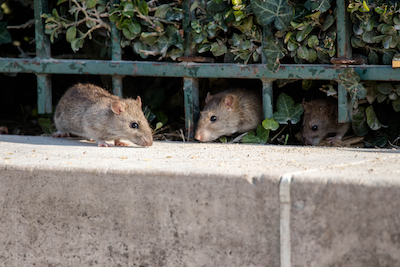Integrated Pest Management and What It Means to Pest Control Professionals
06.14.2023

Integrated pest management (IPM) is a comprehensive approach to controlling pests that combines multiple techniques, including both chemical and non-chemical strategies. Pest control professionals use IPM to address pest problems in urban, agricultural, and wildland or natural areas while reducing risks to people and the environment.
When to Implement IPM
Pest control professionals monitor for pests and take action when populations reach levels that could potentially cause economic harm or other damage. This may include the use of physical, cultural, biological, and chemical control methods to reduce pest populations below an acceptable level. By using IPM, professionals can manage pests in a way that is efficient and cost-effective while also protecting the environment.
Tailoring Specific IPM Programs
Integrated pest management plans are tailored to individual sites based on environmental conditions. Using various principles and practices, unique IPM programs can be created. It goes without saying that every situation is different, however, there are six main components that tend to be part of all IPM programs:
- Pest identification
- Monitoring pest numbers and assessing damage
- Specific guidelines for when action is needed
- Pest problem prevention
- Utilizing a mix of mechanical, biological, chemical, and cultural pest management tools
- Assessment of pest management effectiveness
What Are The IPM Tools?
Mechanical or physical tools such as Kness Pest Defense’s line of pest control products provide a first line of defense in integrated pest management programs. From the industry’s first multiple-catch mousetrap, the Ketch-All®, to the Snap-E mouse and rat traps, insect traps, and small animal traps, the company’s Pro Grade Performance pledge gives professionals peace of mind. Kness products are all hand-tested and boast a less-than-one percent return rate.
Biological control tactics are an integral part of many IPM strategies. Natural enemies or agents such as predators, parasites, and pathogens are used to manage pests by suppressing their population and damage without the use of pesticides. The goal of using biological control in IPM is to reduce the overall reliance on chemical controls while still achieving effective pest management outcomes.
Some IPM approaches incorporate chemicals, which can include numerous types of compounds. These compounds may merely repulse or confuse pests, while some interfere with weed photosynthesis, molting processes, or pest development. Botanical and most conventional insecticides are toxic to living organisms. In fact, the term pesticide means "pest killer" and the specific organism killed is indicated in the name - i.e. insecticides kill insects, rodenticides kill rodents, etc.
Cultural controls are practices that work to reduce pest establishment, reproduction, dispersal, and survival. Examples of cultural controls to reduce pest issues may include changing irrigation practices, mechanical tilling or plowing, and pulling weeds with all their roots.
IPM Benefits
A successful integrated pest management program provides economic, health, and environmental benefits. Not only can IPMs pre unacceptable levels of pest damage they also minimize the risk to people, property, natural resources, infrastructure, and the environment. Even further, IPM programs can help reduce the evolution of pest resistance to pesticides and other pest management practices.
For more information about integrated pest management and how it can help you manage unwanted pests, contact a certified professional. They will provide you with the best possible advice on how to address your pest problem in an effective and responsible manner. Find this article useful? You can find more valuable pest information and solutions at Kness.com.